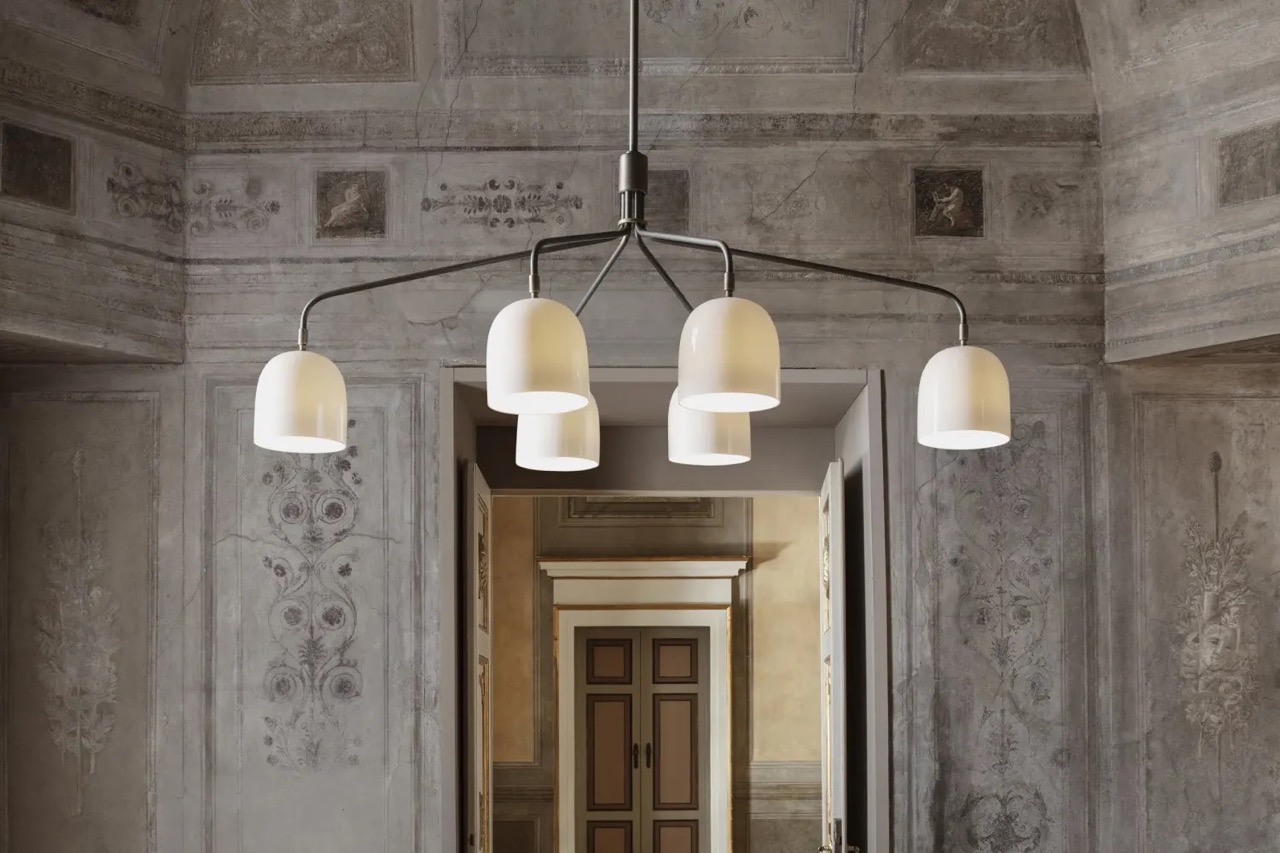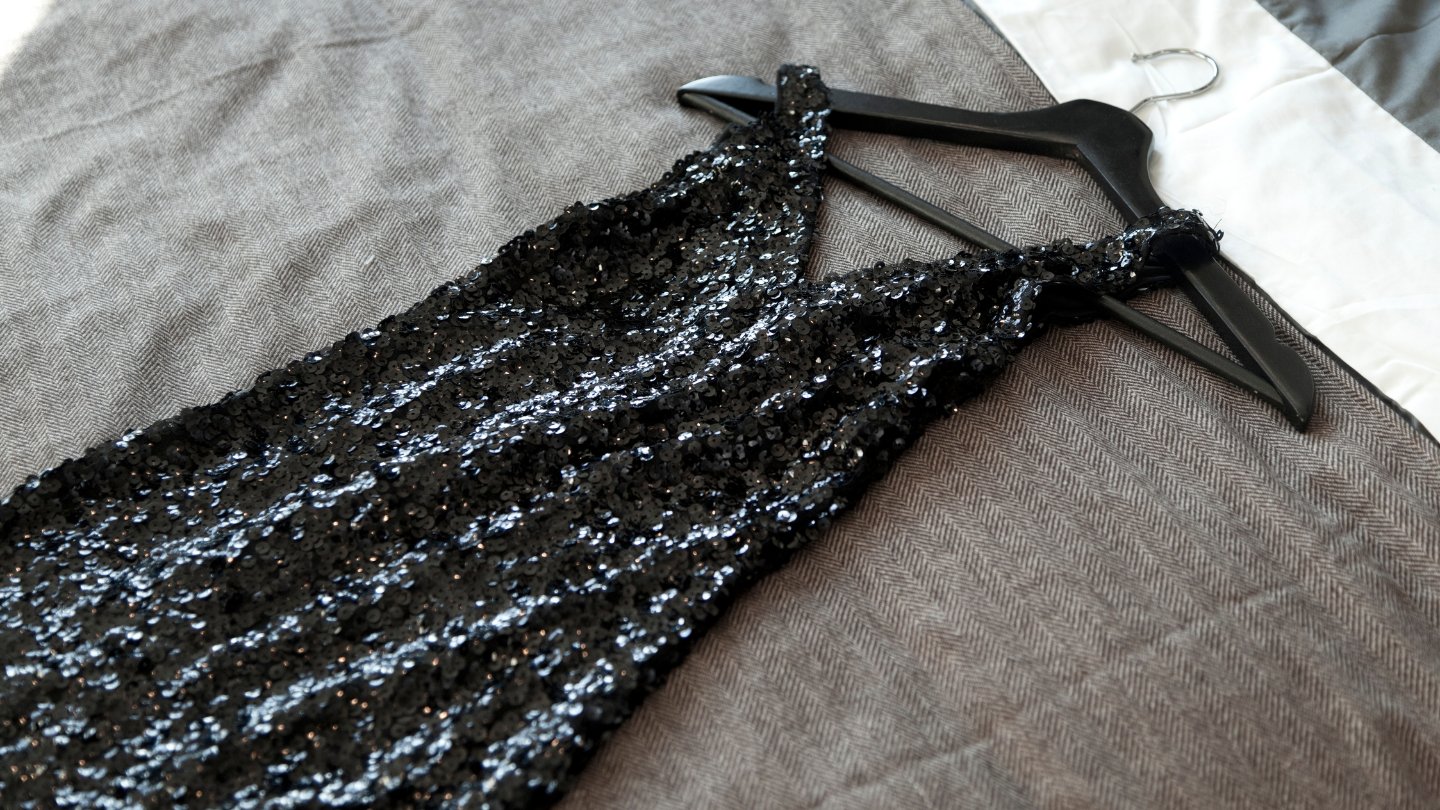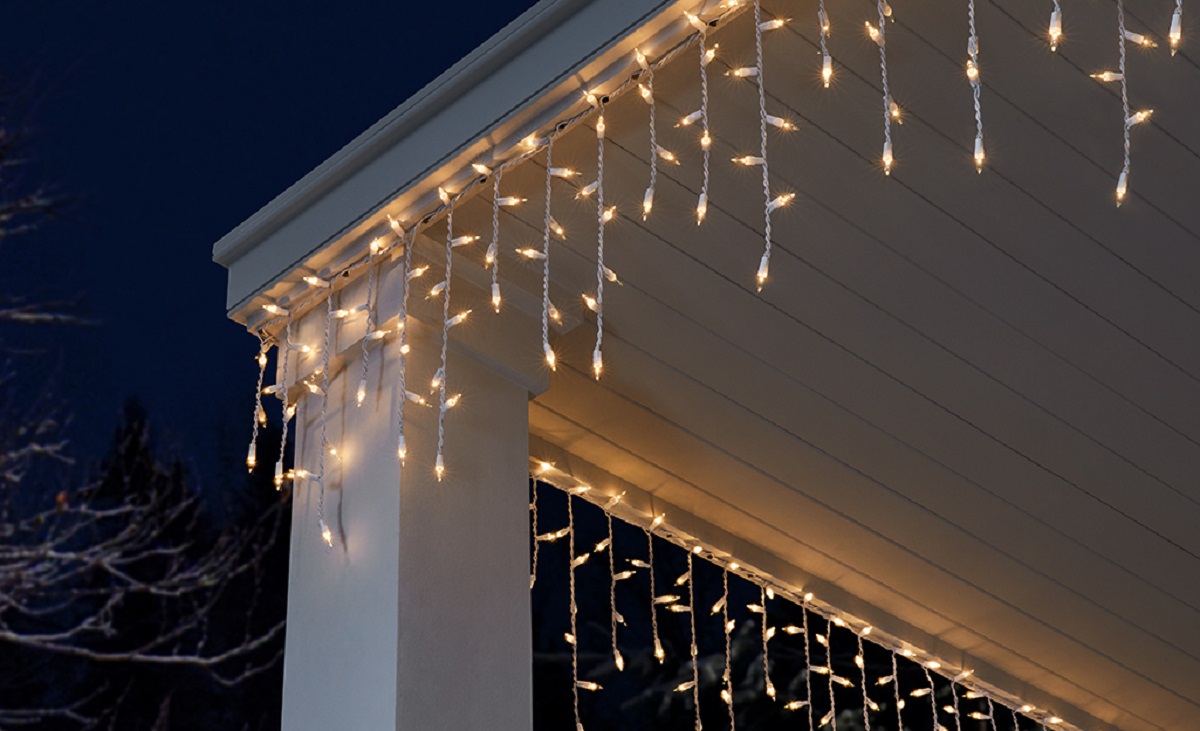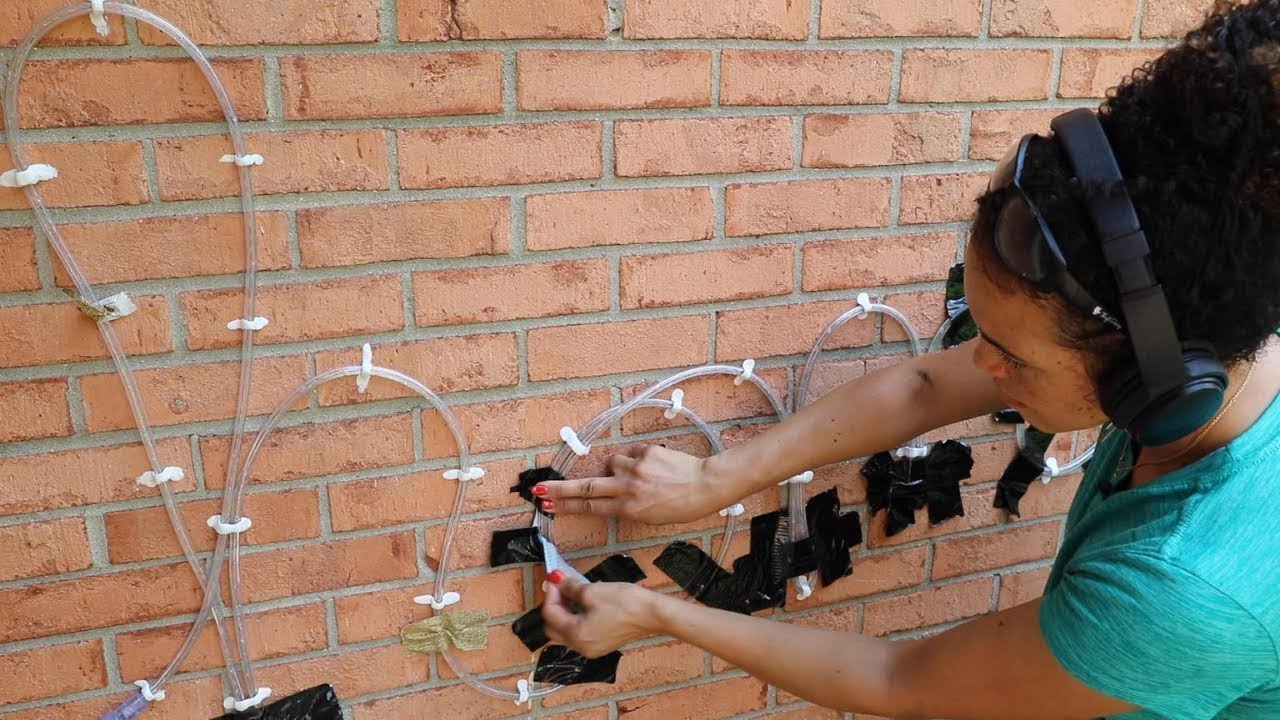

Furniture
How To Hang A Chandelier Without Hardwiring
Modified: January 9, 2024
Learn how to hang a chandelier without hardwiring and transform your space with this easy furniture modification. Discover step-by-step instructions and expert tips.
(Many of the links in this article redirect to a specific reviewed product. Your purchase of these products through affiliate links helps to generate commission for Storables.com, at no extra cost. Learn more)
Introduction
Adding a chandelier to your home decor can instantly elevate the style and ambiance of any room. However, one common challenge many homeowners face is how to hang a chandelier without hardwiring. Hardwiring a chandelier requires professional electrical knowledge and can be costly, but fear not, as there are alternative methods available. In this article, we will guide you through the steps on how to hang a chandelier without hardwiring, allowing you to effortlessly install a stunning centerpiece in your home.
Before we dive into the process, it’s important to note that safety should always be your top priority. When dealing with electrical components, ensure that you adhere to proper safety precautions, such as turning off the power supply to the area you’ll be working in.
Key Takeaways:
- Elevate your home decor with a stunning chandelier without hardwiring. Prioritize safety, choose the right location, and follow step-by-step instructions for a successful and elegant installation.
- Transform your space with an exquisite lighting centerpiece. Hang a chandelier without hardwiring using essential tools, safety precautions, and expert guidance for a rewarding DIY project.
Read more: Where To Hang A Chandelier
Safety Precautions
When it comes to any electrical installation, including hanging a chandelier without hardwiring, it’s crucial to prioritize safety. Here are some essential safety precautions to follow:
- Turn off the power: Before starting any work, switch off the power supply to the area where you’ll be working. This will prevent any potential electrical shocks.
- Use proper tools and equipment: Ensure that you have the necessary tools and equipment to safely handle the chandelier and complete the installation. This may include a ladder, screwdrivers, pliers, wire cutters, and electrical tape.
- Secure the chandelier: Make sure the chandelier is securely hung or supported throughout the installation process. This will prevent it from accidentally falling and causing injury or damage.
- Avoid overload: Be mindful of the electrical load capacity of the circuit you’ll be connecting the chandelier to. Avoid overloading the electrical system by ensuring that the wattage of the chandelier is compatible with the circuit.
- Check for integrity: Inspect the wiring and electrical components of the chandelier to ensure they are in good condition before installation. If you notice any frayed wires or damaged parts, seek professional assistance or replace the chandelier.
- Follow manufacturer instructions: Always refer to the manufacturer’s instructions provided with the chandelier for specific installation guidelines and recommendations. These instructions may vary depending on the chandelier model and design.
- Consult a professional: If you are unsure about any aspect of the installation process or are uncomfortable working with electrical components, it’s best to consult a licensed electrician. They have the expertise to ensure a safe and proper installation.
By adhering to these safety precautions, you can minimize the risk of accidents and ensure a smooth and secure installation of your chandelier.
Step 1: Choose the Right Location
The first step in hanging a chandelier without hardwiring is to choose the right location for it. The location will determine the visual impact of the chandelier and ensure that it fits well within the room’s design and dimensions. Here are some factors to consider:
- Ceiling height: Measure the height of the ceiling to determine how low the chandelier can hang without obstructing the space or being too close to the floor. Consider the height of furniture beneath the chandelier to ensure proper clearance.
- Room size: Take into account the size of the room when choosing a chandelier. A large, ornate chandelier may overwhelm a small room, while a small chandelier may get lost in a large space. Find the right balance to complement the room’s proportions.
- Style and theme: Consider the style and theme of the room when selecting a chandelier. Ensure it harmonizes with the overall decor and enhances the desired ambiance. Whether your room has a modern, traditional, or eclectic look, choose a chandelier that fits the aesthetic.
- Lighting needs: Determine the primary function of the chandelier. Is it meant to provide general lighting for the room or serve as a decorative accent? This will help you choose a chandelier with the appropriate number of bulbs and the desired light output.
- Structural support: Assess the structural support of the ceiling where you plan to hang the chandelier. Ensure that it can handle the weight of the chandelier and any additional hardware required for installation.
Once you’ve considered these factors, mark the chosen location on the ceiling. This will serve as a guide during the installation process. Take note of any nearby electrical outlets or wiring that may affect the positioning of the chandelier.
Choosing the right location for your chandelier is crucial to achieving a visually appealing and cohesive design in your space. Take your time to evaluate the various factors and select a location that best suits your needs and preferences.
Step 2: Gather the Necessary Tools and Materials
Before starting the installation process, gather all the tools and materials you will need. Having everything prepared in advance will ensure a smooth and efficient installation of your chandelier. Here are the essential tools and materials you’ll require:
- Ladder or step stool: Depending on the height of your ceiling, you may need a sturdy ladder or step stool to safely reach and work on the installation area.
- Screwdriver set: A set of screwdrivers with various sizes and types will be necessary for removing and installing screws during the process.
- Wire cutters/strippers: These tools are essential for cutting and stripping the electrical wiring during the installation.
- Electrical tape: Electrical tape is used to secure and insulate the exposed electrical connections.
- Mounting bracket: Depending on the specific method you’re employing to hang the chandelier, you may need to purchase a mounting bracket that is compatible with your chandelier.
- Hook or chain: If you’re utilizing a hook or chain to hang the chandelier, make sure to have a sturdy one that can support the weight of the chandelier.
- Wire nuts: Wire nuts are used to securely connect and protect the electrical connections.
- Chandelier: Of course, you’ll need the chandelier itself. Choose one that fits your style and complements the room’s decor.
- Power source: Depending on your preferred method, you may need an electrical outlet nearby to connect the chandelier to a power source.
- Optional accessories: Depending on your specific installation, you may require additional accessories such as reinforcement straps or ceiling medallions for added support and aesthetics.
Ensure that all the tools and materials are of high quality and in good condition. This will make the installation process easier and minimize the risk of any issues. Having everything prepared beforehand will save you time and frustration during the actual installation.
Once you have gathered all the necessary tools and materials, you’re ready to move on to the next step of the installation process.
Step 3: Measure and Mark the Mounting Spot
With your tools and materials gathered, it’s time to measure and mark the mounting spot for your chandelier. This step is crucial for ensuring that the chandelier is properly positioned and aligned. Follow these steps to measure and mark the mounting spot:
- Measure the ceiling height: Use a tape measure to determine the distance from the floor to the desired height at which you want to hang your chandelier. This will help you position the chandelier correctly in relation to the ceiling and any furniture underneath.
- Find the center of the ceiling: Use a measuring tape to find the center of the ceiling by measuring the width and length of the room. Mark this center point with a pencil or a small piece of tape.
- Measure from the center point: Measure the desired distance from the center point to determine the location where you want the chandelier to hang. Use a plumb bob or a level to verify that the spot is vertically aligned.
- Mark the mounting spot: Once you have determined the appropriate location, mark it on the ceiling using a pencil or a piece of tape. Double-check the alignment and make any necessary adjustments before proceeding to the next step.
By measuring and marking the precise mounting spot, you ensure that your chandelier will be properly centered and perfectly positioned within the room. Taking the time to accurately mark the spot will save you from potential misalignment and frustration during the installation process.
Read more: How To Hang Heavy Chandelier
Step 4: Attach the Mounting Bracket
With the mounting spot marked on the ceiling, it’s time to attach the mounting bracket for your chandelier. The mounting bracket provides a secure foundation for the chandelier and ensures that it hangs safely. Follow these steps to attach the mounting bracket:
- Position the mounting bracket: Hold the mounting bracket up to the marked spot on the ceiling. Ensure that it is level and aligned with the markings.
- Mark the screw holes: Using a pencil or a small nail, mark the screw holes on the ceiling through the mounting bracket. This will serve as a guide for drilling or screwing in the screws.
- Pre-drill or screw in the screws: Depending on the type of ceiling and the mounting bracket, you may need to pre-drill holes or directly screw in the screws. If pre-drilling, use a drill bit that matches the size of the screws. If screwing directly, use a screwdriver or a drill with an appropriate bit.
- Secure the mounting bracket: Align the screw holes of the mounting bracket with the pre-drilled holes or screws. Use a screwdriver or a drill to tighten the screws and secure the mounting bracket to the ceiling. Ensure that the bracket is firmly attached and does not wobble or move.
Once the mounting bracket is securely attached to the ceiling, it provides a sturdy base for hanging your chandelier. Make sure to double-check that the bracket is level and flush with the ceiling. This step lays the foundation for the remaining installation process.
Consider using a swag kit to hang a chandelier without hardwiring. This kit allows you to plug the chandelier into an outlet and then swag the cord to the desired location.
Step 5: Install a Hook or Chain
With the mounting bracket in place, the next step is to install a hook or chain that will support your chandelier. The type of installation will depend on the design and weight of your chandelier. Follow these steps to install a hook or chain:
- Determine the appropriate length: Measure the distance from the mounting bracket to the desired hanging height of your chandelier. This will help you determine the length of the hook or chain you need.
- Attach the hook or chain to the chandelier: For chandeliers with a hook attachment, simply secure the hook to the designated hanging point on the chandelier. For chandeliers with a chain attachment, attach the chain to the chandelier using the provided connectors or hooks.
- Hang the hook or chain from the mounting bracket: Lift the chandelier and hang the hook or chain from the mounting bracket. Ensure that it is securely hooked or linked to the bracket.
- Adjust the length, if necessary: If the chandelier is hanging too low or too high, adjust the length of the chain or hook accordingly. This can be done by linking or unlinking chain links or adjusting the position of hooks.
- Ensure stability: Gently shake the chandelier to ensure that it is stable and properly secured. If there is any wobbling or instability, make the necessary adjustments to ensure a stable and balanced installation.
Installing a hook or chain provides the necessary support for your chandelier, allowing it to hang safely from the mounting bracket. It’s important to consider the weight and design of the chandelier to determine the appropriate installation method. By following these steps, you’ll ensure a secure and visually appealing installation for your chandelier.
Step 6: Hang the Chandelier
With the hook or chain securely attached to the mounting bracket, it’s time to hang your chandelier. This step requires careful handling and attention to detail to ensure a successful installation. Follow these steps to hang your chandelier:
- Get assistance, if needed: Depending on the weight and size of the chandelier, you may need someone to assist you in holding and lifting it during the installation process. This will help prevent any accidents or damage.
- Align the chandelier: Hold the chandelier by the hook or chain and position it directly beneath the hook or chain hanging from the mounting bracket. Ensure that the chandelier is centered and aligned with the marked spot on the ceiling.
- Engage the hook or chain: Lift the chandelier slightly and engage the hook or chain with the one hanging from the mounting bracket. Carefully lower the chandelier until it rests securely on the hook or chain.
- Double-check stability: Gently shake the chandelier and observe if it is stable and balanced. Make any necessary adjustments to ensure that the chandelier hangs straight and does not swing or wobble.
- Ensure proper clearance: Check that the chandelier has adequate clearance from the ceiling, walls, and any nearby furniture. It should be positioned at the desired height and not interfere with the surrounding space.
Once the chandelier is securely hung, step back and take a moment to admire your beautiful installation. Ensure that the chandelier is level, balanced, and visually appealing. It should become the focal point of the room, enhancing the ambiance and adding a touch of elegance.
Remember, if you encounter any difficulty during the hanging process or if the chandelier is too heavy for you to handle, it’s best to seek assistance from a professional. They have the necessary expertise and equipment to ensure a safe and successful installation.
Step 7: Secure the Wiring
With the chandelier hanging securely, the next step is to properly secure the wiring. This is a crucial step to ensure the safety and functionality of your chandelier. Follow these steps to secure the wiring:
- Turn off the power: Before handling any electrical components, make sure to turn off the power supply to the area where the chandelier is installed. This will prevent any potential electrical accidents.
- Arrange the wiring: Carefully arrange the wires from the chandelier, taking care not to twist or tangle them. Ensure that the wires are neatly organized and free from any obstructions.
- Secure the wires: Use electrical tape or cable ties to secure the wires to the chain or any available support. This will prevent the wires from hanging loosely and getting tangled or damaged.
- Keep wires away from heat sources: Make sure to position the wiring in a way that it is not in direct contact with any heat sources, such as bulbs or nearby light fixtures. This will prevent any potential heat damage.
- Tuck away excess wiring: If there is excess wiring, carefully tuck it away or bundle it up using cable ties. This will help maintain a cleaner and more organized appearance.
- Inspect wiring connections: Double-check all the wiring connections to ensure they are secure and properly connected. Tighten any loose connections and make sure that no exposed wires are visible.
By securely arranging and organizing the wiring, you not only ensure the safety of your chandelier but also maintain a clean and professional-looking installation. Take your time to carefully secure the wiring, ensuring that there are no loose or exposed wires that could pose a hazard.
Once you have secured the wiring, you can proceed to the next step of connecting the chandelier to a power source.
Read more: How To Hang A Chandelier From The Ceiling
Step 8: Connect the Chandelier to a Power Source
With the wiring securely in place, it’s time to connect your chandelier to a power source. This step will bring your chandelier to life, illuminating the room with its captivating beauty. Follow these steps to connect the chandelier to a power source:
- Turn off the power: Ensure that the power supply to the area where the chandelier is installed is turned off before proceeding. This is important to prevent any electrical accidents.
- Identify the power source: Locate the nearest electrical outlet or wiring that will be used to power the chandelier. It’s important to choose a power source that is compatible with the electrical requirements of your chandelier.
- Prepare the wires: Trim any excess wiring, leaving enough length to safely reach the power source. Strip the insulation from the ends of the wires, using wire strippers, to expose the copper conductor.
- Make the electrical connections: Connect the corresponding wires from the chandelier to the power source. Twist the exposed copper conductor of the chandelier’s wires with the corresponding wires from the power source. Secure the connections using wire nuts and wrap them with electrical tape for added insulation.
- Double-check the connections: Ensure that all the electrical connections are securely made and there are no loose wires or exposed copper. Verify that the color-coded wires are properly matched (e.g., black to black, white to white, and green or copper to the grounding wire).
- Turn on the power: Once all the connections are securely made, turn on the power to the area where the chandelier is installed. Use the corresponding light switch or breaker to activate the power supply.
By following these steps, you will safely and properly connect your chandelier to a power source, allowing it to illuminate your space. It’s important to ensure that all electrical connections are properly made and there are no exposed wires or loose connections that could present a safety hazard.
Before proceeding to the final step, it’s crucial to conduct a thorough test to ensure that your chandelier functions properly and is ready to be enjoyed.
Step 9: Test the Chandelier
After connecting the chandelier to a power source, it’s important to test its functionality before considering the installation complete. Testing the chandelier will ensure that all the electrical connections are properly made and that the light fixtures are in working order. Follow these steps to test the chandelier:
- Double-check the power: Verify that the power supply to the area where the chandelier is installed is turned on.
- Toggle the light switch: Activate the light switch or control panel that controls the power to the chandelier. If the chandelier has multiple light fixtures or bulbs, ensure that all of them work as intended.
- Observe the light output: Take note of the brightness and quality of the light emitted by the chandelier. Ensure that all bulbs are functioning and that the overall illumination meets your expectations.
- Check for stability: While the chandelier is turned on, observe its stability. Shake the chandelier lightly to ensure that it remains securely fixed and does not sway or wobble excessively.
- Look for any issues: Inspect the chandelier for any flickering lights, buzzing sounds, or other signs of electrical problems. If you notice any issues, turn off the power and troubleshoot the problem before continuing to use the chandelier.
- Make necessary adjustments: If the chandelier does not meet your desired lighting or aesthetic requirements, consider making adjustments. This could involve replacing or repositioning bulbs, adjusting the height or angle of the chandelier, or addressing any stability issues.
By thoroughly testing the chandelier, you can ensure its functionality and address any potential issues before considering the installation complete. It’s important to remember that if you encounter any electrical problems or concerns, it’s best to consult a licensed electrician for professional assistance.
Once you are satisfied with the performance and appearance of your chandelier, you can now sit back, relax, and enjoy the stunning illumination it brings to your space.
Conclusion
Hanging a chandelier without hardwiring can seem like a daunting task, but with the right tools and knowledge, it can be a rewarding DIY project. By following the steps outlined in this guide, you can successfully install a beautiful chandelier that adds elegance and ambiance to your space.
Throughout the process, it’s important to prioritize safety. Always turn off the power supply, secure the wiring properly, and seek professional assistance if needed. Ensuring the stability of the chandelier and following manufacturer instructions are key to a successful installation.
Choosing the right location, gathering the necessary tools and materials, measuring and marking the mounting spot, attaching the mounting bracket, installing a hook or chain, hanging the chandelier, securing the wiring, connecting it to a power source, and testing its functionality are the essential steps to follow.
Remember that each chandelier installation may have its own unique requirements, so be sure to refer to the manufacturer’s instructions provided with your specific chandelier model.
Now that you have the knowledge and confidence to hang a chandelier without hardwiring, go ahead and transform your space with an exquisite lighting centerpiece. Enjoy the beauty and charm that your stylish chandelier brings to your home!
Frequently Asked Questions about How To Hang A Chandelier Without Hardwiring
Was this page helpful?
At Storables.com, we guarantee accurate and reliable information. Our content, validated by Expert Board Contributors, is crafted following stringent Editorial Policies. We're committed to providing you with well-researched, expert-backed insights for all your informational needs.














0 thoughts on “How To Hang A Chandelier Without Hardwiring”